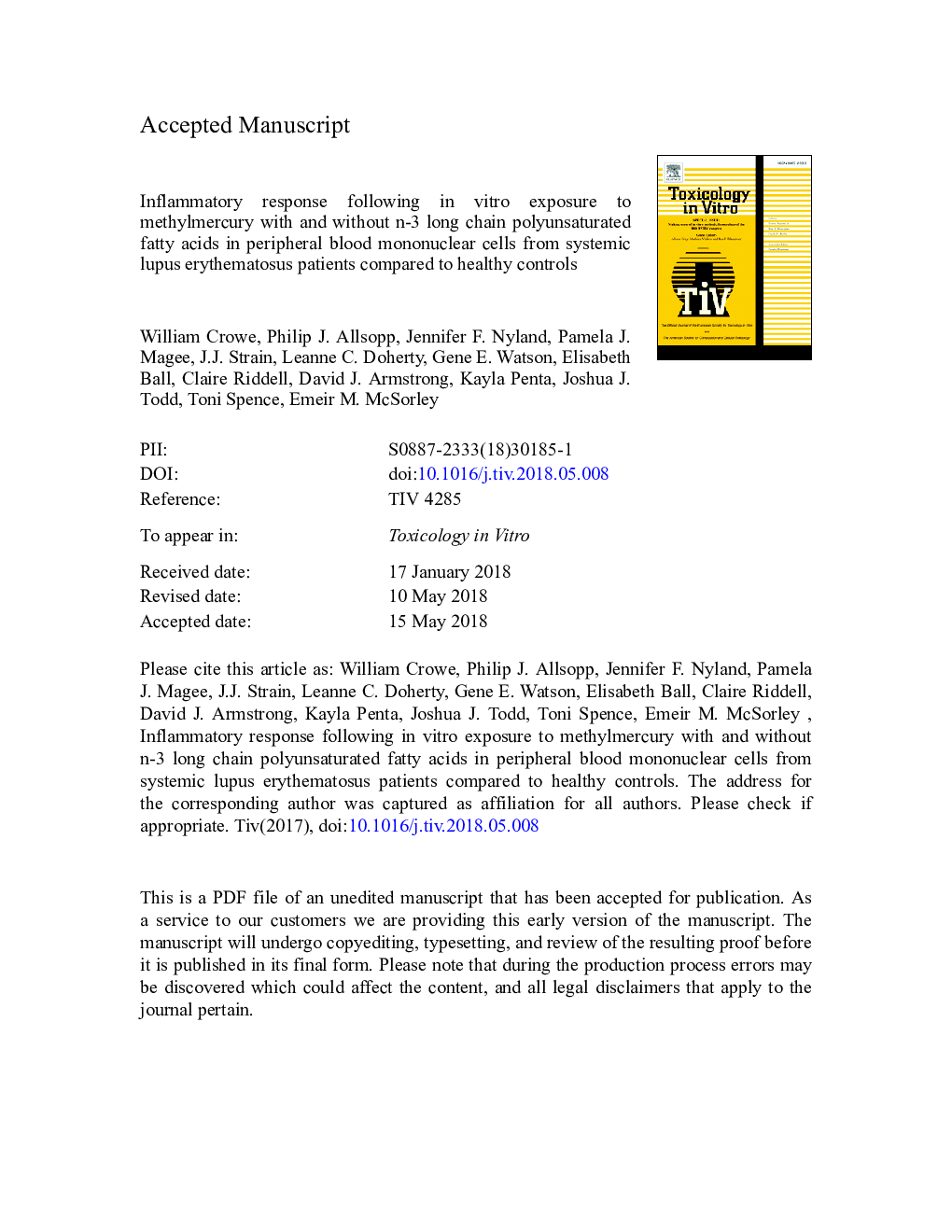| Article ID | Journal | Published Year | Pages | File Type |
|---|---|---|---|---|
| 8553870 | Toxicology in Vitro | 2018 | 32 Pages |
Abstract
Methylmercury (MeHg) is a proposed environmental stimulus in systemic lupus erythematosus (SLE). Humans are primarily exposed to MeHg through fish consumption. Fish are also important sources of n-3 long chain polyunsaturated fatty acids (n-3 LCPUFA). This in vitro study investigated the inflammatory response of isolated peripheral blood mononuclear cells (PBMCs), when exposed to either MeHg alone or with added n-3 LCPUFA, from SLE patients (Nâ¯=â¯12) compared to healthy sex matched controls (Nâ¯=â¯12). The PBMCs were isolated and exposed to 200â¯nM of MeHg for 24â¯h with or without pre-exposure to eicosapentaenoic acid (EPA) or docosahexaenoic acid (DHA) at a concentration of 100â¯Î¼M each. Supernatants were analyzed for the inflammatory markers. Following exposure to MeHg, mean TNF-α concentrations were significantly higher in SLE patients (2226.01â¯Â±â¯348.98pg/ml) compared to controls (701.40â¯Â±â¯680.65â¯pg/ml) (Pâ¯=â¯.008). Pre-exposure of cells with MeHg and EPA resulted in a significantly higher concentration of IL-8 in supernatants from SLE patients (2137.83â¯Â±â¯1559.01â¯pg/ml) compared to that of the controls (879.26â¯Â±â¯979.49â¯pg/ml) (Pâ¯=â¯.030). EPA and DHA attenuated the pro-inflammatory inducing effects of MeHg in SLE and control cells. In summary, exposure to MeHg stimulated a higher TNF-α response in SLE patients compared with healthy controls; nevertheless the presence of n-3 LCPUFA reduced the overall inflammatory response, albeit to a lesser degree in SLE patients.
Keywords
Related Topics
Life Sciences
Environmental Science
Health, Toxicology and Mutagenesis
Authors
William Crowe, Philip J. Allsopp, Jennifer F. Nyland, Pamela J. Magee, J.J. Strain, Leanne C. Doherty, Gene E. Watson, Elisabeth Ball, Claire Riddell, David J. Armstrong, Kayla Penta, Joshua J. Todd, Toni Spence, Emeir M. McSorley,
